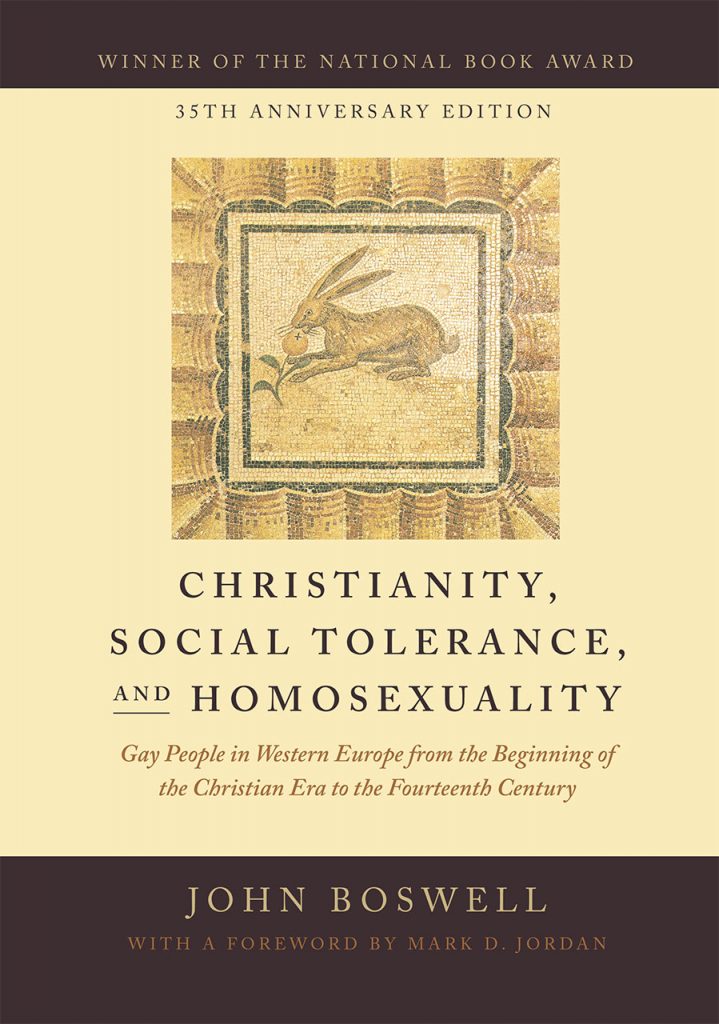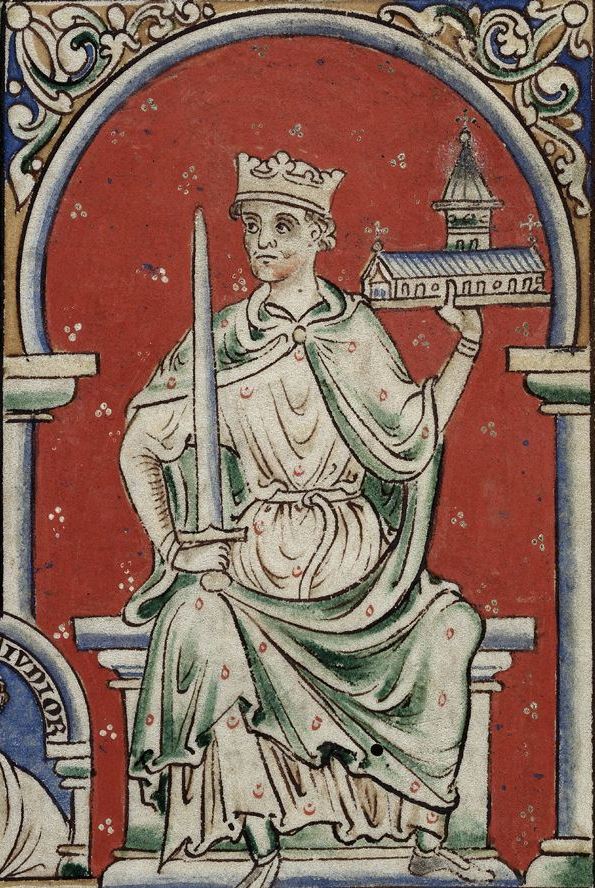Since its publication in 1980, John Boswell’s Christianity, Social Tolerance and Homosexuality has dominated conversations about the history of sexuality. Within academic circles, it provoked considerable debate, being subjected to fierce criticism even as it was adopted as one of the foundation texts of a new discipline. Its impact was also felt outside the academy: a New York Times Book of the Year (1980) and winner of a National Book Award (1981), it attracted (and continues to attract) a wide non-specialist readership. This week on NOTCHES, we examine the Boswell legacy, asking three leading medievalists to evaluate the book’s significance today, more than three decades after its publication. We’d love to hear what Boswell’s book means to our readers so please continue the conversation in our comments section.

I began my undergraduate studies in the year after John Boswell’s untimely death, and came across his work towards the end of my doctoral research. I was stunned by this scholar who could command so many languages (17 by all accounts); who had, it seemed, read everything and had something stimulating to say about it; who managed to combine brilliant scholarship with humanity and a sense of the relevance of medieval culture to the contemporary world.
Revisiting Christianity, Social Tolerance and Homosexuality over a decade after I first read it, and three and a half decades after its publication, is both an inspiring and a depressing experience. Inspiring because of the book’s scope and ambition and the depth of Boswell’s erudition and insight. Depressing because parts of the world and of academia have focussed on the book’s flaws and remain deaf to its implicit message of tolerance; of the importance of engaging seriously with one’s opponents; of becoming aware of one’s own unexamined assumptions.
Boswell has been criticized by both religious conservatives and traditionalist scholars as well as liberals and queer theorists. Their principal objections (which vary in articulacy and logic) are:
- that it is anachronistic and misleading to speak of ‘gay’ people in the premodern period
- that Boswell’s interpretations often exceed what the evidence warrants
- that Boswell misrepresents the medieval Church’s stance on same-sex relations (conservative Catholic scholars tend to quarrel with his argument that the early Church was largely unconcerned about them, whereas queer theorists sometimes deplore his ‘whitewashing’ of the Church’s persecution of sexual minorities).
Boswell’s use of the term ‘gay’ to designate those ‘conscious of erotic preference for their own gender’ in any era seems disingenuous and overly limiting, particularly when it functions to erase bisexuality or sexual fluidity. However, what many anti-essentialist critics miss is that no terminological choice is unproblematic. Moreover, the still widespread treatment of male-female relations in medieval literature as straightforwardly heterosexual is no less anachronistic.
Boswell may sometimes push the evidence too far, or oversimplify the complexity of medieval social attitudes and sexual mores, but we must remember that he was reacting against the weight of preceding consensus or censorship. He often reiterates his sense of himself as a pioneer posting ‘landmarks where there were none before,’ and clearly expected to be corrected on many issues.

Subsequent theorists have usually argued for a more complicated interplay of religious and secular attitudes, theoretical and pragmatic responses – attitudes and responses that shift from country to country, milieu to milieu, situation to situation. My own work, for instance, argues for a more nuanced view of early medieval evidence, teasing out a complex range of attitudes in the Anglo-Saxon period, sometimes within the work of the same writer, depending on whether he is writing in Latin or the vernacular. But none of the subsequent nuancing of the political, theological, cultural, and literary movements could have been achieved without the stimulus of Boswell’s bold and ambitious overarching grand narrative.
Boswell was well aware of ‘the inevitable errors of first explorations.’ However, again and again, he articulates medievalist questions that still provoke debate (sometimes raging, sometimes whimpering):
- can we speak of premodern sexual identities, or just of sexual acts?
- how far can we distinguish literary convention from genuine emotion in both hetero- and non-heteronormative contexts?
- to what extent did some medieval cultures recognize, celebrate, or turn a blind eye to committed same-sex unions?
- how far is homophobic intolerance grounded in religious conviction, and how far is that conviction a convenient front for politically or personally motivated antipathy?
But Boswell’s work also speaks to currently acute global concerns:
- how far should democracy go in protecting minority rights?
- what are the boundaries of tolerance?
- does categorization as part of a minority enable political mobilization and agency, or does it foster self-limitation and facilitate marginalization?
- where is the dividing line (is there one?) between erotic and friendly interaction?
Boswell begins his introduction with a epigraph (from Henri Pirenne) that emphasizes the provisional nature of scholarship and rejoices in it: ‘for the rapid obsolescence of [a scholar’s] books is the very proof of the progress of scholarship.’ Boswell’s book has helped to inspire scores of PhD dissertations, articles, monographs, and scholarly careers in several disciplines. It is a measure of Boswell’s brilliance that it nevertheless remains an important source of insight and provocation about both the premodern world and our own.
 David Clark is Associate Professor in Medieval Literatures at the University of Leicester, UK. He has published on gender and sexuality in Old English, Old Norse, Middle English, and Early Modern literature. He is currently working on medievalism in contemporary literature and film.
David Clark is Associate Professor in Medieval Literatures at the University of Leicester, UK. He has published on gender and sexuality in Old English, Old Norse, Middle English, and Early Modern literature. He is currently working on medievalism in contemporary literature and film.

NOTCHES: (re)marks on the history of sexuality is licensed under a Creative Commons Attribution-NonCommercial-NoDerivatives 4.0 International License.
Based on a work at www.notchesblog.com.
For permission to publish any NOTCHES post in whole or in part please contact the editors at NotchesBlog@gmail.com




